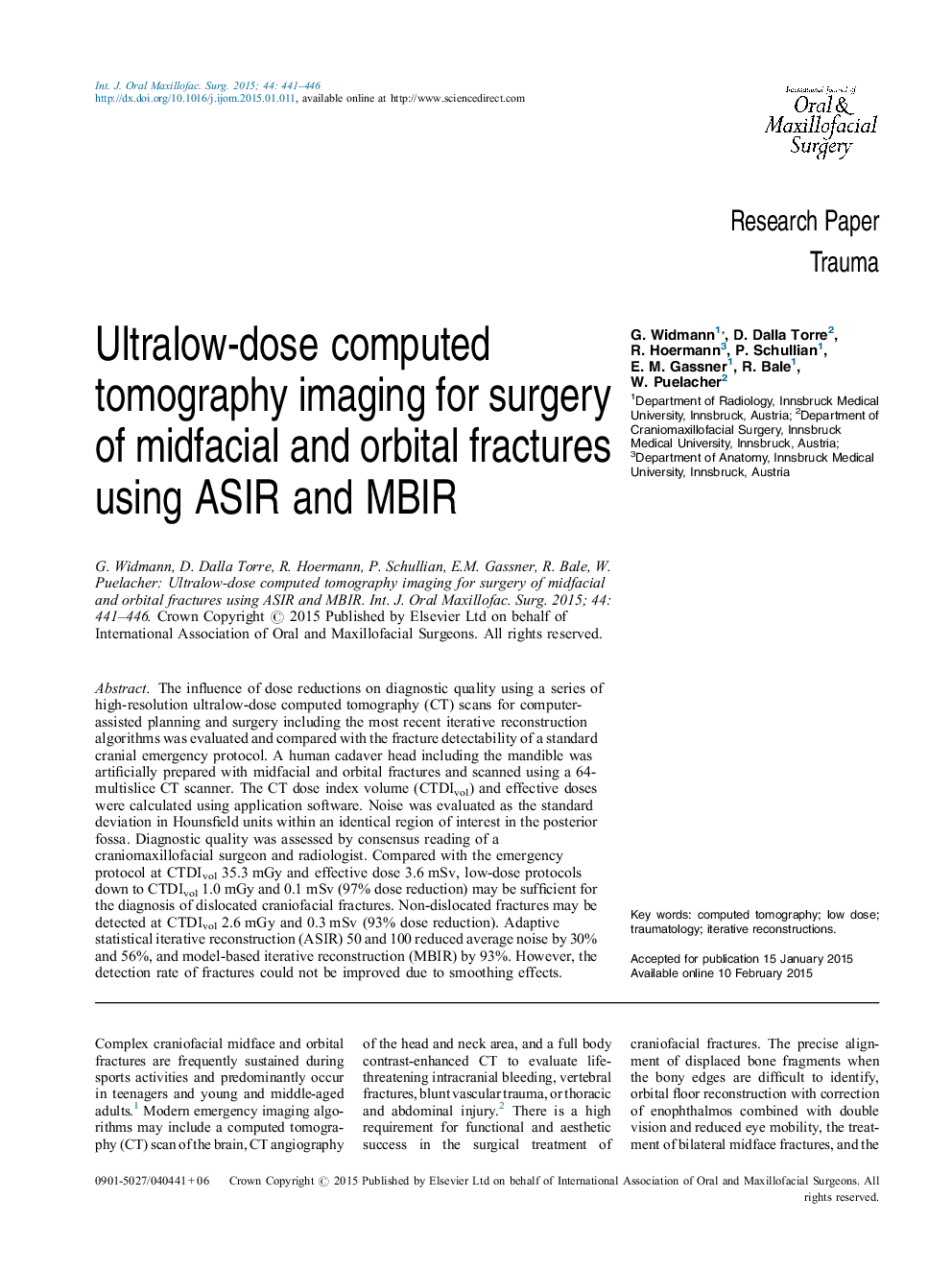| Article ID | Journal | Published Year | Pages | File Type |
|---|---|---|---|---|
| 6052335 | International Journal of Oral and Maxillofacial Surgery | 2015 | 6 Pages |
The influence of dose reductions on diagnostic quality using a series of high-resolution ultralow-dose computed tomography (CT) scans for computer-assisted planning and surgery including the most recent iterative reconstruction algorithms was evaluated and compared with the fracture detectability of a standard cranial emergency protocol. A human cadaver head including the mandible was artificially prepared with midfacial and orbital fractures and scanned using a 64-multislice CT scanner. The CT dose index volume (CTDIvol) and effective doses were calculated using application software. Noise was evaluated as the standard deviation in Hounsfield units within an identical region of interest in the posterior fossa. Diagnostic quality was assessed by consensus reading of a craniomaxillofacial surgeon and radiologist. Compared with the emergency protocol at CTDIvol 35.3Â mGy and effective dose 3.6Â mSv, low-dose protocols down to CTDIvol 1.0Â mGy and 0.1Â mSv (97% dose reduction) may be sufficient for the diagnosis of dislocated craniofacial fractures. Non-dislocated fractures may be detected at CTDIvol 2.6Â mGy and 0.3Â mSv (93% dose reduction). Adaptive statistical iterative reconstruction (ASIR) 50 and 100 reduced average noise by 30% and 56%, and model-based iterative reconstruction (MBIR) by 93%. However, the detection rate of fractures could not be improved due to smoothing effects.
